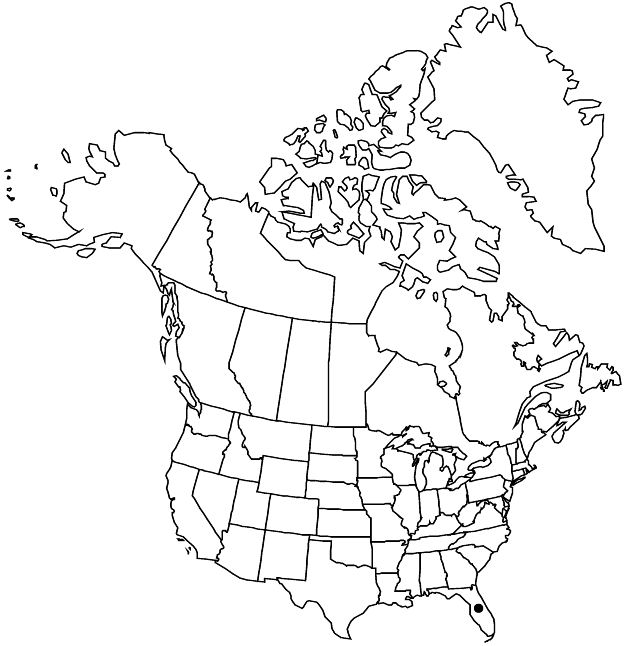Passiflora pallens
in C. F. P. von Martius et al., Fl. Bras. 13(1): 567, plate 128, fig. 4. 1872.
Stems terete when young, glabrous. Leaves weakly to moderately pungent, glabrous; stipules subreniform, 10–20 × 5–14 mm, eglandular; petiole glandular, glands clavate; blade roughly symmetric, 1.5–6 × 2.5–9 cm, shallowly 3-lobed, middle lobe as long as or longer than lateral lobes, margins serrate basally; abaxial fine veins moderately raised, abaxial nectaries absent. Floral bracts ovate, 10–20 × 9–12 mm, margins basally serrate to glandular-serrate basally. Flowers: floral-tube cuplike, 3–5 mm deep; sepals white, 30–35 × 7–12 mm; petals white, 20–30 × 6–10 mm; corona filament whorls 4, outer filaments green basally, white apically, with alternating lines of purple, linear, terete, 7–15 mm. Berries yellow to yellow-orange, ovoid, 30–50 × 25–35 mm.
Phenology: Flowering Apr–Dec.
Habitat: Margins of and sunny gaps within mesic to wet tropical to subtropical woodlands
Elevation: 0–10 m
Distribution

Fla., West Indies (Cuba), West Indies (Hispaniola)
Discussion
Leaf and stipule variegation, although rare within subg. Passiflora, is occasionally found in Passiflora pallens, and may serve to camouflage plants from predators in the dappled shade of their habitats. Listed as endangered in Florida, in the flora area it is found only in the southernmost part of the state.
Selected References
None.
Lower Taxa
"fine" is not a number.